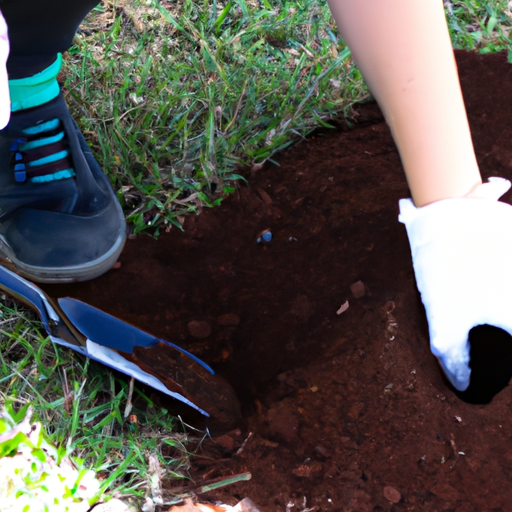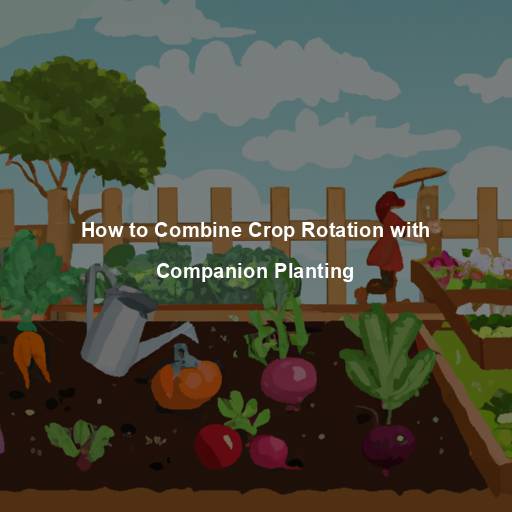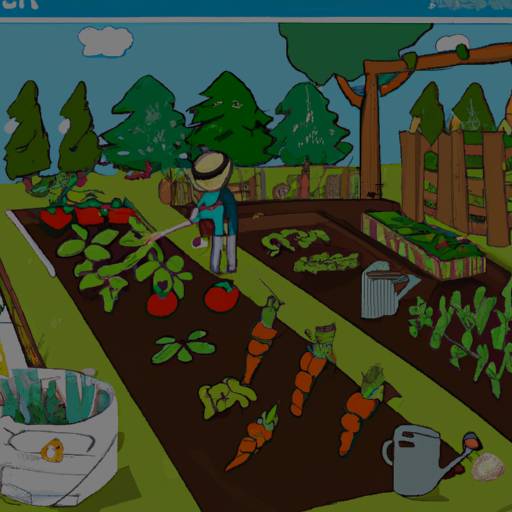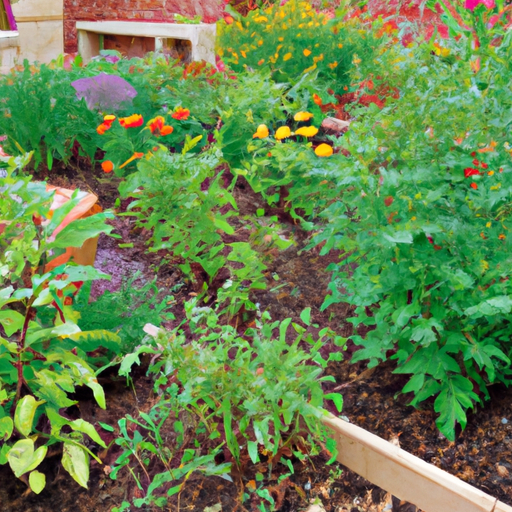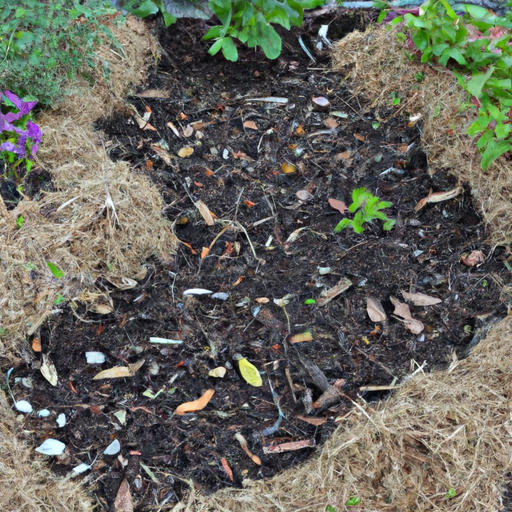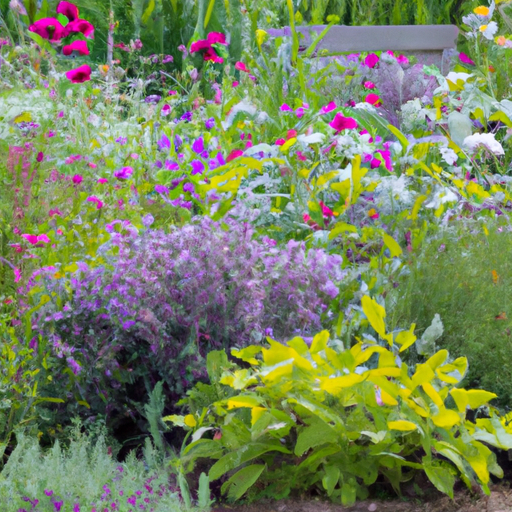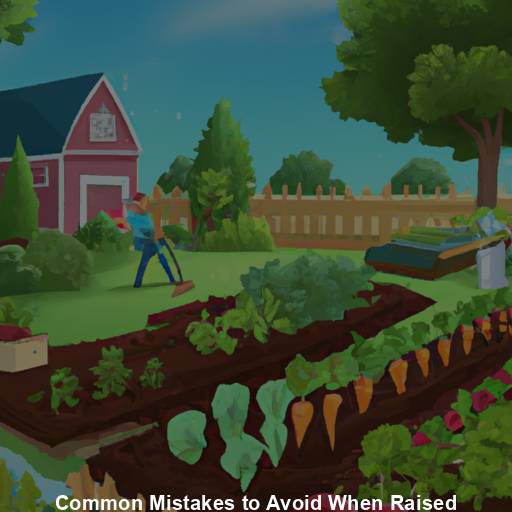Hey there fellow gardeners! If you’re looking to take your gardening skills to the next level, then mastering the basics of garden soil preparation is an absolute must.
No matter how green your thumb may be, without a proper understanding of soil composition and how to prepare it for planting, you’ll likely encounter some frustrating setbacks in your gardening journey.
In this article, we’ll cover everything you need to know about getting your garden’s soil in tip-top shape. From analyzing soil types and pH levels to incorporating nutrient-rich amendments and ensuring proper drainage, we’ll walk you through each step of the process so that you can set yourself up for success with every seed you sow.
So grab a cup of tea (or coffee if that’s more your style), sit back, and let’s dive into the wonderful world of garden soil preparation together!
Understanding Soil Composition
Understanding the composition of your garden soil is essential for successful gardening.
Soil testing can reveal important information about its pH level, nutrient content, and texture.
By understanding these factors, you can determine what amendments your soil needs to support healthy plant growth.
Organic matter plays a crucial role in improving soil structure and fertility.
Adding compost or other organic materials can increase water retention, promote beneficial microbial activity, and provide nutrients to plants over time.
Taking the time to understand and amend your garden soil will ultimately lead to healthier, more productive plants that thrive in their growing environment.
Assessing Soil Ph Levels
Now that we have a better understanding of soil composition, let’s move on to assessing the pH levels of our garden soil.
Measuring acidity or alkalinity is crucial in determining the proper nutrients needed for plants to thrive.
The ideal range for most crops is between 6 and 7 pH level.
If your soil has an acidic pH below 6, you can adjust the alkalinity by adding lime to raise it up.
On the other hand, if your soil has an alkaline pH above 7, you can add sulfur or peat moss to lower its pH level.
Keep in mind that different plants require different pH levels, so be sure to research what your specific plant needs before making any adjustments.
By accurately assessing and adjusting your soil’s pH levels, you’ll create a healthy growing environment and improve overall plant growth and production.
Incorporating Nutrient-Rich Amendments
As we continue on our journey of mastering the basics of garden soil preparation, it’s time to delve into incorporating nutrient-rich amendments.
Imagine walking through a lush and vibrant vegetable patch filled with plump tomatoes, crisp lettuce leaves, and colorful bell peppers – this is what you can achieve by enriching your soil with the right organic amendments.
Composting benefits cannot be overstated in this regard as they provide an abundant source of beneficial microorganisms that help break down nutrients for plant uptake.
But how do organic amendments compare to synthetic ones? Let’s take a look at four key differences:
1. Organic amendments are derived from natural sources whereas synthetic ones are made from chemicals.
2. Organic amendments improve soil structure over time whereas synthetic ones tend to degrade it.
3. Organic amendments often contain trace minerals that are not found in synthetic ones.
4. Organic amendments promote healthy microbial activity which contributes to overall soil health.
As Master Gardeners, we know that choosing the right amendment for your garden is essential for optimal plant growth and yield. While both types have their advantages and disadvantages, opting for organic amendments will benefit your plants more in the long run while also promoting sustainability and environmental responsibility.
So go ahead and give your garden some love by working in some compost or other organic matter – your plants (and Mother Nature) will thank you!
Ensuring Proper Drainage
Now that you have incorporated nutrient-rich amendments into your garden soil, it’s important to ensure proper drainage.
Without adequate drainage, your plants can become waterlogged and suffer from root rot or other issues.
One way to improve drainage is by using raised beds, which allow excess water to drain away from plant roots more easily.
Another key factor in good drainage is mulching techniques; adding a layer of organic matter such as leaves, straw, or wood chips on top of the soil will help retain moisture without creating standing water.
With these tips in mind, you’ll be well on your way to mastering the basics of garden soil preparation and setting yourself up for a successful growing season.
Techniques For Optimal Soil Preparation
Just as a painter needs to prime their canvas before painting, and a chef must prep ingredients before cooking, an aspiring gardener must cultivate optimal soil for bountiful crops.
One technique that can greatly benefit the health of your garden is composting. By mixing organic matter such as food scraps, leaves, and grass clippings into your soil, you will promote healthy microbial activity which helps break down nutrients for plants to absorb.
Additionally, consider using raised beds in your garden design. This method allows for easier access to plant roots and also provides better drainage than traditional flat planting areas.
With these techniques in mind, you’ll be on your way to mastering the art of soil preparation!
Frequently Asked Questions
What Are The Most Common Mistakes People Make When Preparing Garden Soil?
When it comes to garden soil preparation, there are many common misconceptions that people tend to make.
One of the most frequent mistakes is not paying enough attention to improving drainage in their soil. This can lead to waterlogged plants and root rot, which ultimately harms the health of your garden. To combat this issue, I always recommend incorporating organic matter such as compost or peat moss into your soil.
Another misconception is thinking that more fertilizer equals better growth for your plants. In reality, over-fertilization can cause nutrient burn and even kill off beneficial microbes in the soil. It’s important to test your soil regularly and only add nutrients when necessary.
By avoiding these common pitfalls and taking steps to improve your soil’s drainage, you’ll be well on your way to a thriving garden in no time!
How Often Should I Test My Garden Soil Ph Levels?
As a Master Gardener, I cannot stress enough the importance of regularly testing your garden soil’s pH levels.
It’s not just a matter of convenience or preference; it can make all the difference between thriving plants and lackluster growth.
Don’t make the mistake that many gardeners do by neglecting this crucial step in soil preparation – test your pH levels at least once every year to ensure you’re within the optimal range for nutrient uptake.
Trust me, your plants will thank you for it!
Can I Use Compost As A Substitute For Commercial Fertilizers?
Using homemade compost is a great organic alternative to commercial fertilizers.
Compost provides essential nutrients and improves soil texture, making it an excellent substitute for chemical fertilizers.
Not only does it aid in plant growth, but it also helps retain moisture in the soil while reducing erosion.
Additionally, using compost reduces waste by repurposing organic material that would otherwise end up in landfills.
While there are benefits to using both compost and chemical fertilizers, incorporating homemade compost into your garden routine can lead to healthier plants and a more sustainable gardening practice.
What Is The Best Way To Deal With Compacted Soil?
When dealing with compacted soil, the best way to improve its texture and structure is through soil aeration.
This process involves creating small holes in the ground to allow air, water, and nutrients to penetrate deeper into the soil.
Soil amendments such as compost or organic matter can also be added to help break up the compacted soil while providing additional nutrients for plants.
It’s important to note that different types of soil may require different approaches when it comes to aeration and amendments, so it’s always recommended to consult with local gardening experts before making any major changes to your garden bed.
Are There Any Natural Methods For Controlling Pests And Diseases In Garden Soil?
Are you tired of using harsh chemicals in your garden to control pests and diseases? There are natural methods available!
Companion planting is one way to deter insects from feasting on your plants. For example, plant marigolds near tomatoes to repel nematodes.
Another method is soil solarization, which involves covering moist soil with clear plastic for several weeks in the sun to kill off pathogens and weed seeds.
By incorporating these techniques into your gardening routine, you can have a healthier garden without relying on harmful chemicals. As a Master Gardener, I highly recommend exploring natural pest and disease management practices for a more sustainable approach to gardening.
Conclusion
In conclusion, as a Master Gardener, I can attest that mastering the basics of garden soil preparation is crucial for any successful gardening experience.
It’s important to avoid common mistakes such as over-fertilizing or neglecting pH levels. Testing your soil periodically can help you make informed decisions when it comes to nutrient and amendment application.
Compost is an excellent alternative to commercial fertilizers and can be used in conjunction with other organic matter to improve soil health. Dealing with compacted soil may require physical labor but will pay off in the long run.
Just like pruning your plants, pest and disease control should also be approached naturally whenever possible. Remember, preparing garden soil is like laying a foundation for a house – get it right and everything else falls into place like a well-oiled machine!
